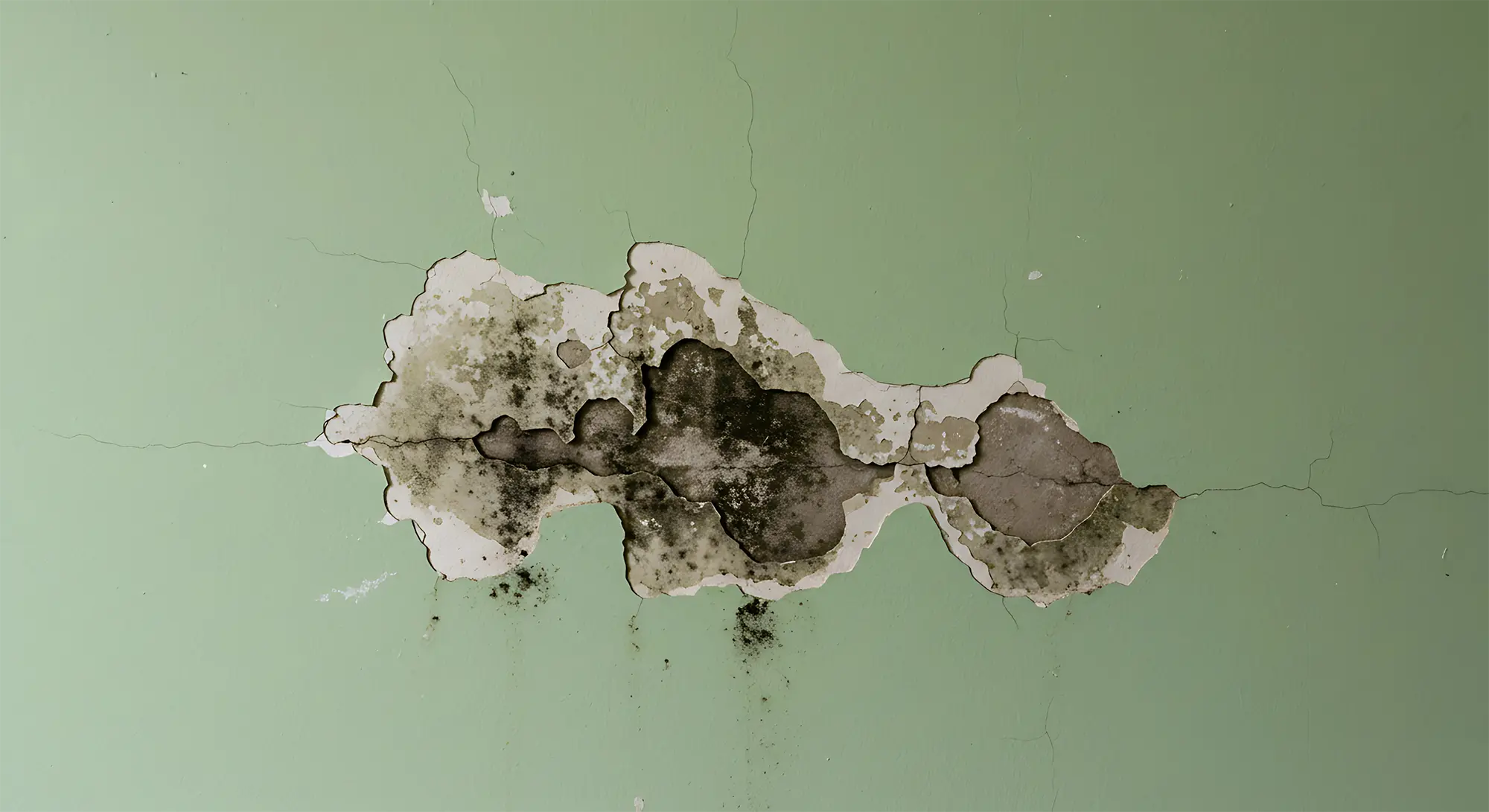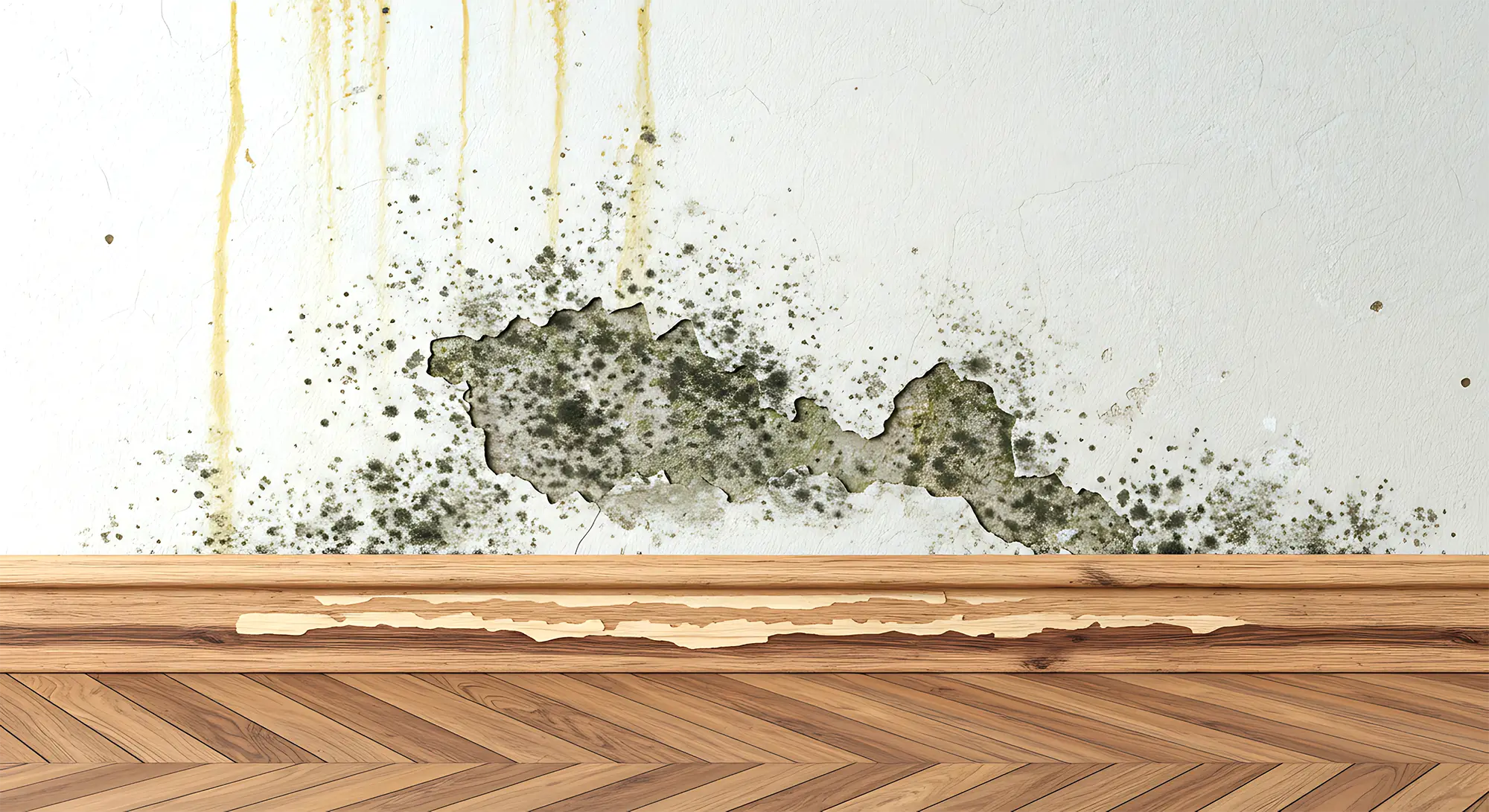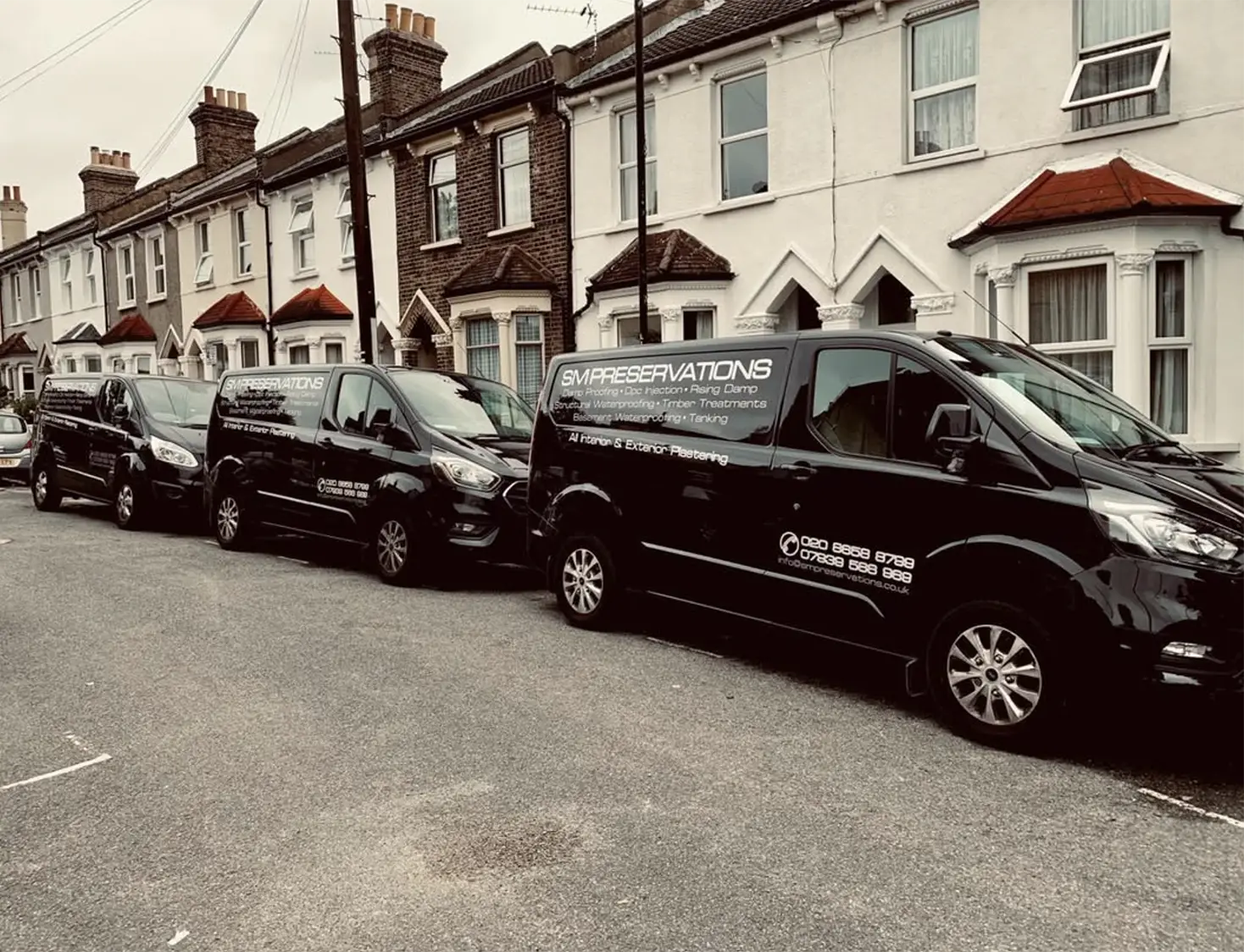Expert Water Ingress Detection, Prevention & Repair
At SM Preservations, we specialise in water ingress detection and treatment across Bromley and surrounding areas.
If you’ve noticed damp patches, water leaks, or mould growth inside your property, our experienced team can quickly identify the cause and provide lasting waterproofing solutions to stop water entering your home or building.
What Is Water Ingress?
Water ingress refers to unwanted water entering a property through walls, roofs, basements, or structural cracks.
Unlike surface leaks, water ingress can be subtle, seeping through brickwork, joints, or defective seals over time and often leads to damp, rot, and structural deterioration if left untreated.
Our expert surveyors use specialist equipment to locate hidden sources of moisture and design the most effective system to keep your property completely dry.
Why Choose SM Preservations

Accreditations & Insurance
Proud member of Checkatrade. Fully insured and compliant with UK building preservation standards.
Common Causes of Water Ingress

Water can enter your property in several ways. Our team is trained to identify and repair all sources, including:
- Cracked or porous brickwork
- Defective pointing or rendering
- Blocked or broken guttering and downpipes
- Faulty roof coverings or flashings
- Poorly sealed window or door frames
- Structural cracks or movement joints
- Groundwater pressure affecting basements and foundations
How to Identify Water Ingress

- Damp or discoloured patches on internal walls
- Peeling paint or blistering plaster
- Mould growth or musty odours
- Dripping or staining near windows and ceilings
- Efflorescence (white salt deposits) on brickwork
- Cold, damp basement walls or floors
If you notice any of these signs, contact SM Preservations for a professional damp and water ingress survey.
Our Step-by-Step Waterproofing Process

Inspection & Diagnosis
We conduct a detailed moisture survey using specialist equipment to locate the exact point of water entry and assess the level of damage.

Identify Root Cause
Our experts determine whether the issue is caused by external defects, structural problems, or internal condensation.

Recommend Tailored Solution
We provide a clear, detailed report outlining the best treatment plan — such as masonry waterproofing, tanking, or drainage improvements.

Professional Repair & Waterproofing
Our skilled technicians carry out all necessary works safely and efficiently, ensuring complete water tightness.

Final Check & Aftercare
Once completed, we re-inspect all treated areas and offer advice on long-term prevention and maintenance.
Contact Form

Get a Free Damp Survey
Don’t let damp damage your home. Book a no-obligation survey today to identify the cause and get a fixed-price solution.
FAQ's
Water ingress is caused by external water entering the property, while damp can also result from internal moisture or condensation. Our surveyors will identify the exact cause and recommend the most suitable treatment.
Yes — prolonged water ingress can weaken masonry, timber, and plaster, leading to serious structural issues if ignored. Early treatment helps prevent costly repairs in the future.
We start with a full inspection to locate the source, then apply the best combination of repairs, sealing, and waterproofing systems to eliminate the issue and protect your property for years to come.
